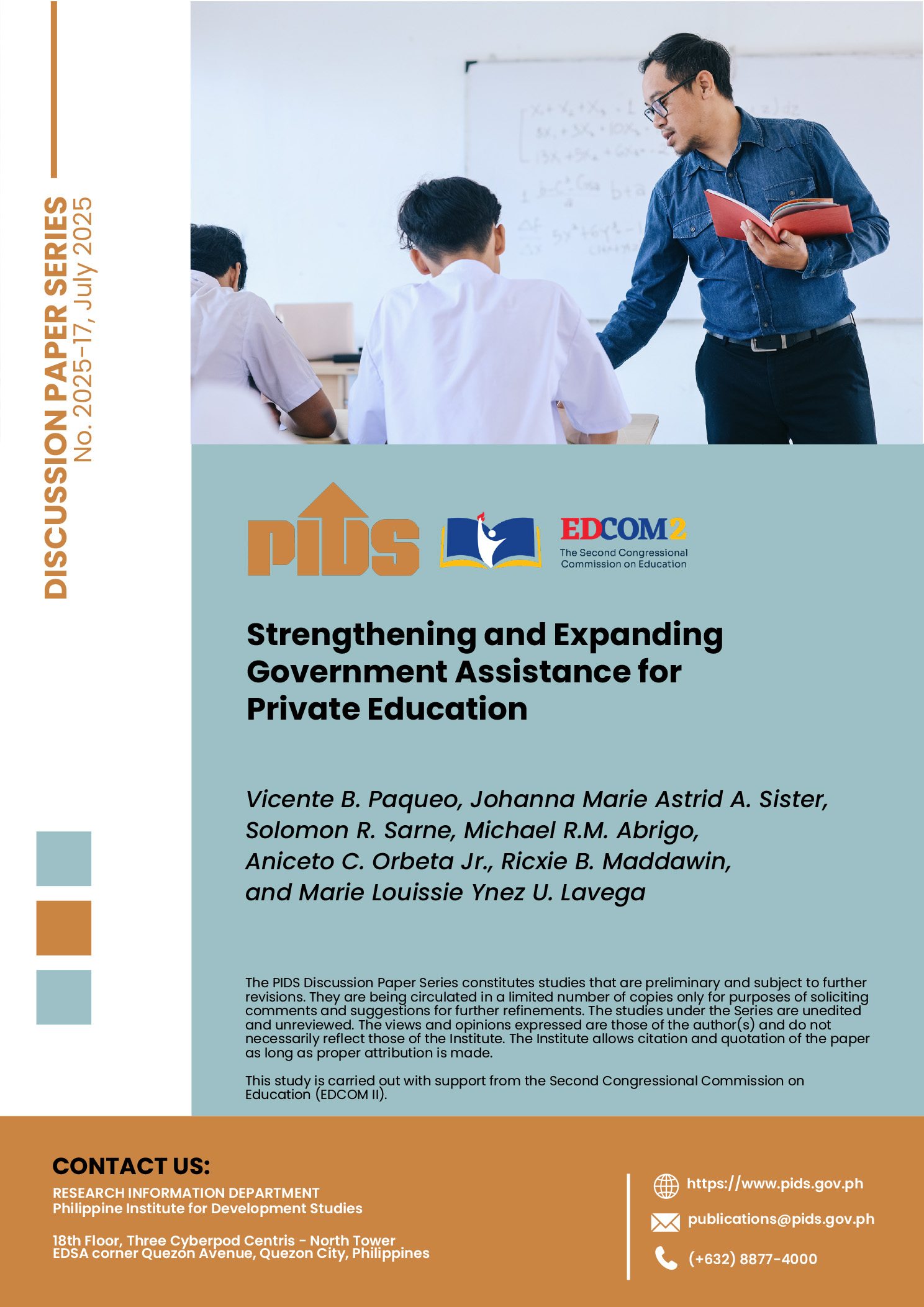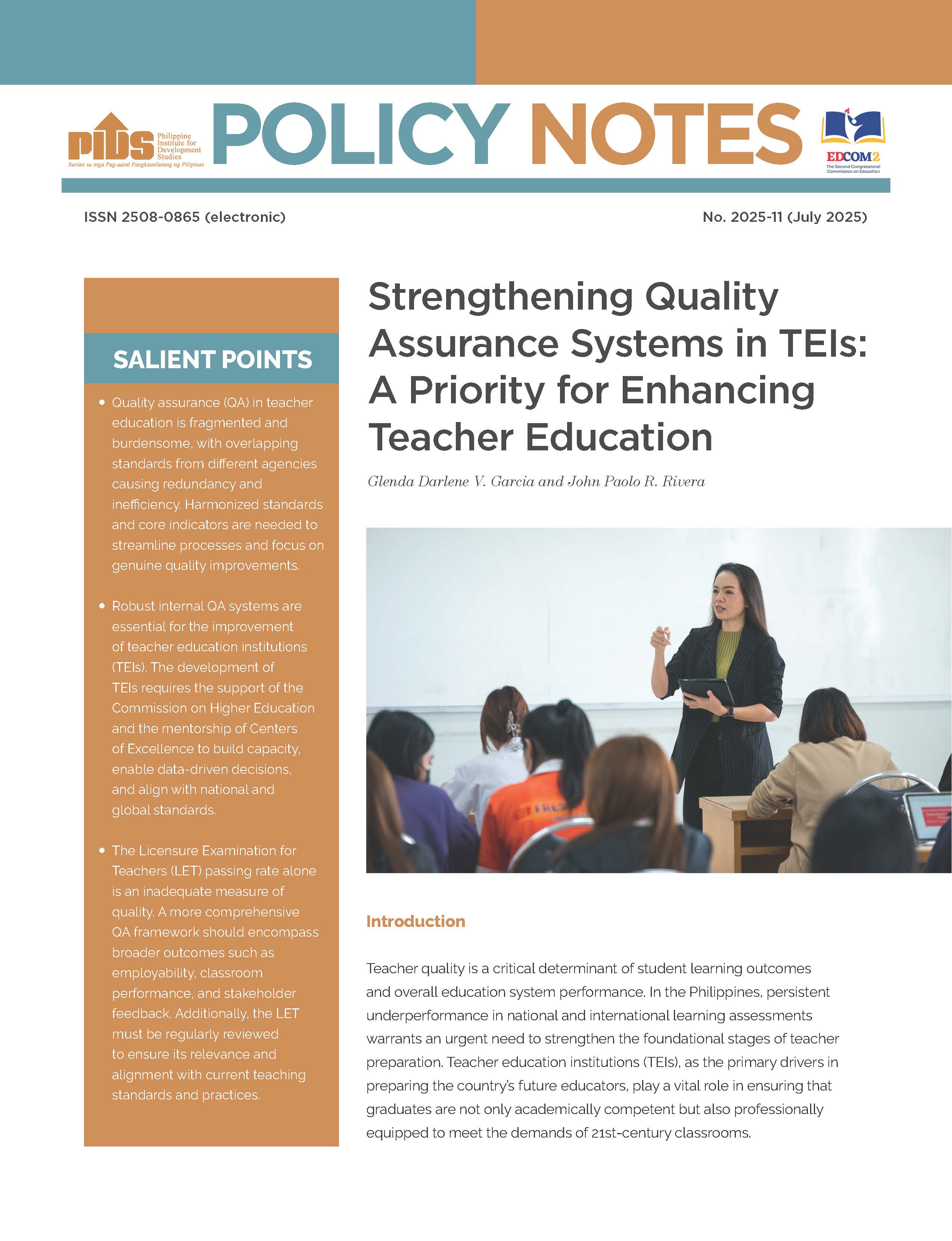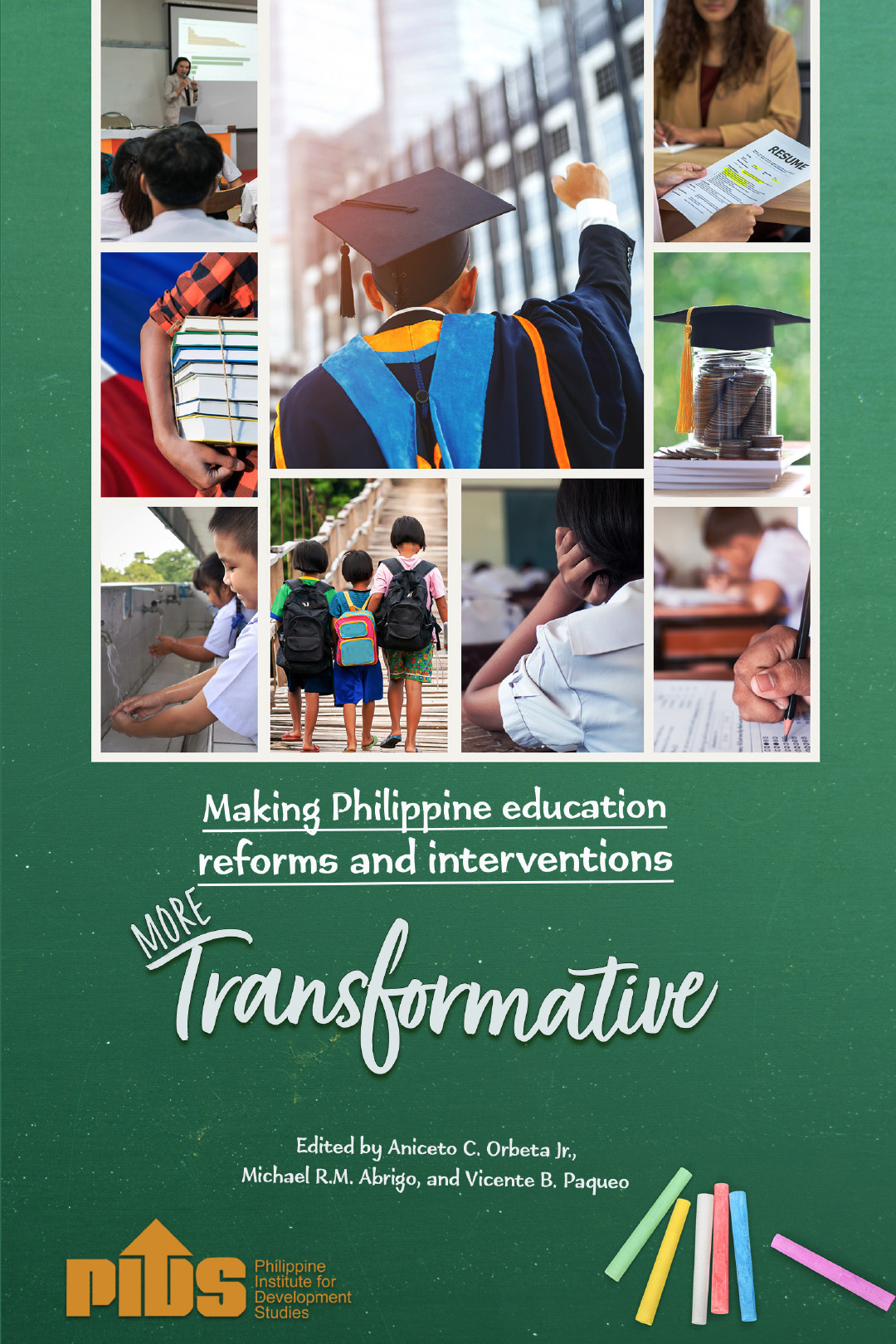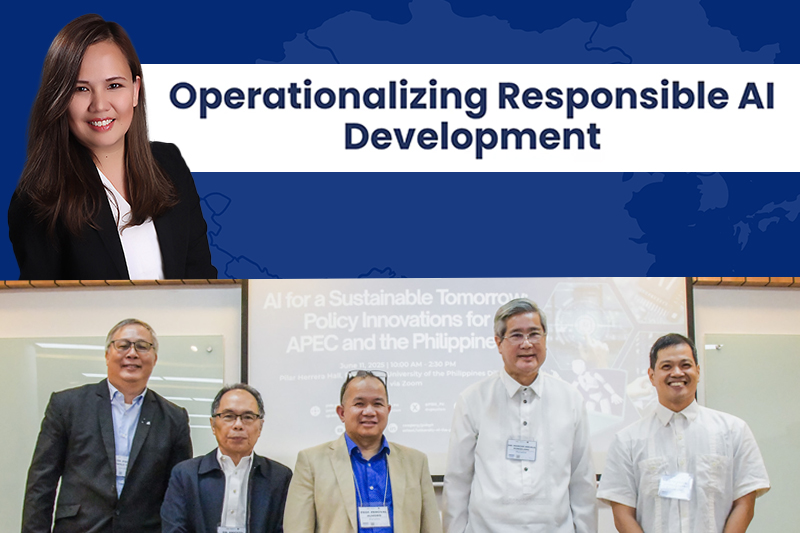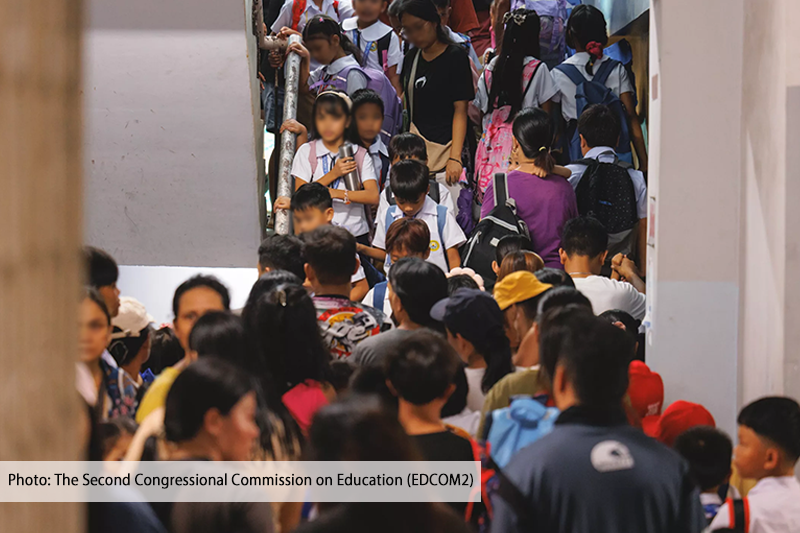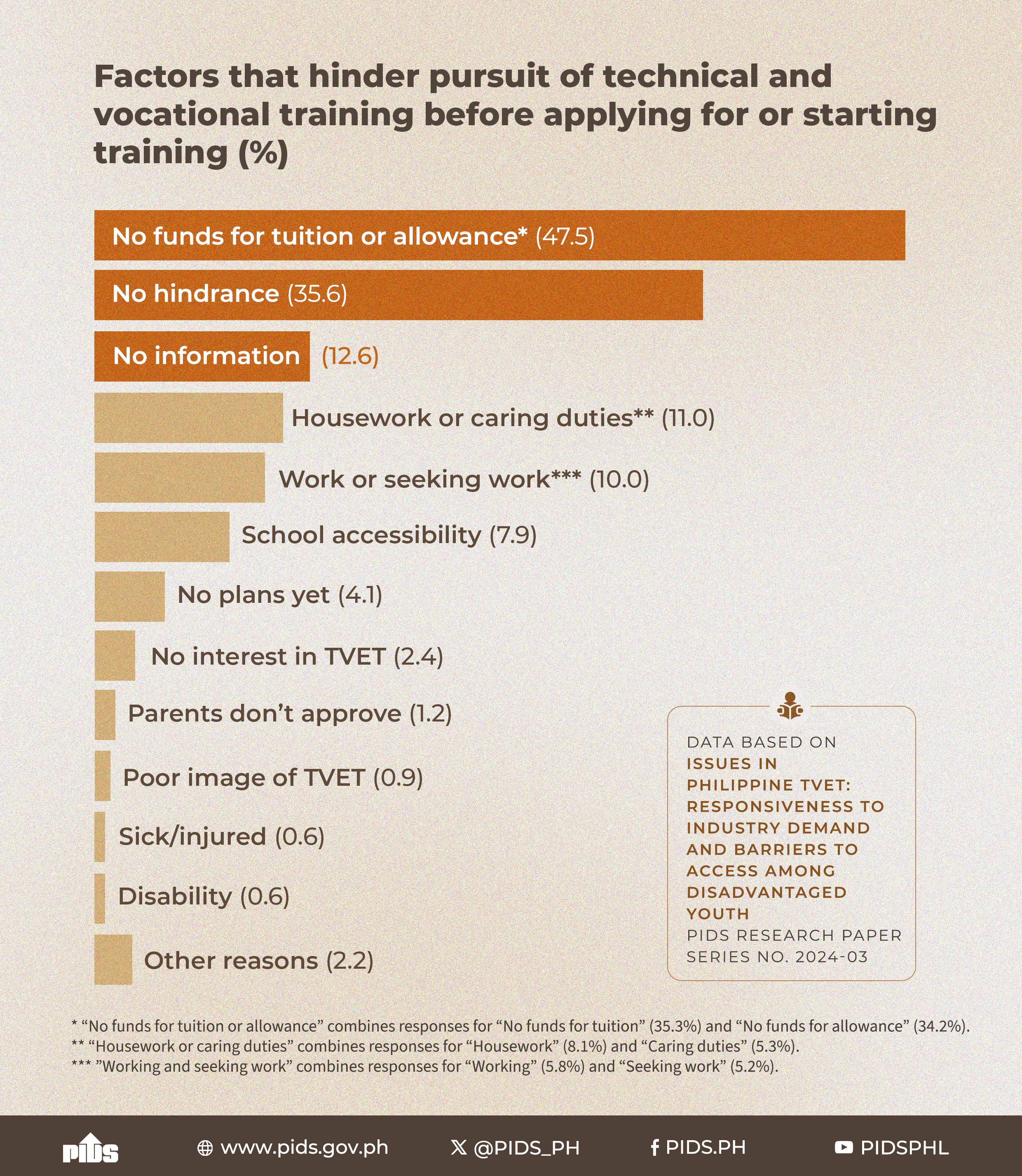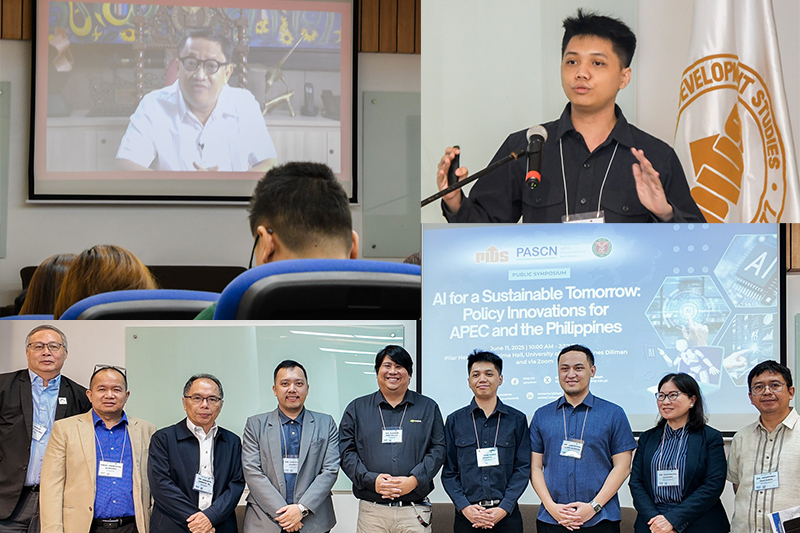
The Philippine Institute for Development Studies (PIDS) and the University of the Philippines (UP), through the Philippine APEC Study Center Network (PASCN), convened over 80 technologists, experts, and education officials on June 11, 2025, to discuss how artificial intelligence (AI) is now being used to address class disruptions and improve subsidy delivery.
“Without inclusive policies and programs, the AI revolution may exacerbate, not reduce, inequality,” said PIDS President Aniceto C. Orbeta, Jr., who emphasized the need for cross-agency coordination and sustained investments in digital infrastructure and education.
During the forum, the Department of Education (DepEd) presented two of the seven high-impact projects under the Education Center for AI Research (E-CAIR), its flagship program for advancing AI research in the Philippines.
“We are no longer asking if AI should be in education. We are asking how to use it responsibly to solve real problems,” said Dr. Sebastian Ibanez, Deputy Chief AI and Data Officer of E-CAIR.
He described E-CAIR as a transformative hub housing data scientists and AI engineers prepared to design, develop, and deploy AI-driven solutions, aligned with DepEd’s 5-point agenda to enhance education, support teachers, and equip students with future-ready skills.
“If we get this right,” said Dr. Ibanez, “AI can help us leapfrog deep-rooted challenges—from disaster response to dropout rates—and create a more equitable future for learners.”
Project LIGTAS: multi-hazard analytics for school resilience
One flagship initiative highlighted in the symposium is the Project LIGTAS (Learning Institution GeoHazard Tracking and Assessment for Safety), which integrates AI modeling and satellite data with DepEd and DOST-PAGASA information to help schools anticipate risks from floods, landslides, and extreme heat, among others.
The project also links these risks to student learning data, such as reading proficiencies, to help education officials design strategies and ensure the uninterrupted delivery of education even during extreme weather conditions.
“We do not just predict. We pro-actively and strategically plan ahead of time, reducing the effects of hazards and ensuring that no student is left behind,” said Jose Marie Antonio Minoza, a senior data scientist at E-CAIR.
Project PAARAL: from graphs to smarter subsidies and access
While Project LIGTAS safeguards learning continuity amid disaster risks, Project PAARAL applies AI to analyze the implementation of DepEd’s subsidy program for students in private schools.
The Senior High School (SHS) Voucher Subsidy Program addresses public school congestion by funding qualified students to enroll in private school partners.
Using AI-generated school graph networks built from open-source location and road data, the project visualizes road distances and isolation of private and public schools to calculate education spending.
These graphs can identify underserved areas and reveal where government vouchers fall short of actual tuition fees, limiting access to private education for low-income students.
“We found that on average, students still need ₱20,000 out-of-pocket (spending) despite a ₱9,000 government subsidy,” said Sebastian Felipe Bundoc, a data scientist at E-CAIR.
“This kind of insight helps policymakers rethink how we structure financial support,” he added, as he presented a case study using an AI-generated network that mapped school accessibility.
Policy reflections
With AI promising to create a long-term social impact in the education sector, PIDS incoming President Philip Arnold Tuaño echoed a call:
“The message is clear—AI is not a distant technological promise, but a present reality with transformative potential for our education system.”
Meanwhile, UP President Atty. Angelo Jimenez posed a challenge on ethical standards, privacy, and democratic values in utilizing the innovations brought about by AI.
“It is not just a question of how AI works but for whom it should work and to what ends—it must uplift rather than exclude; empower, rather than marginalize.”
As AI continues to evolve, PIDS and its partners remain committed to sparking conversations that align innovation with equity, inclusion, and the public good.
Watch the forum playback at https://bit.ly/pidslive061125. — AABM


